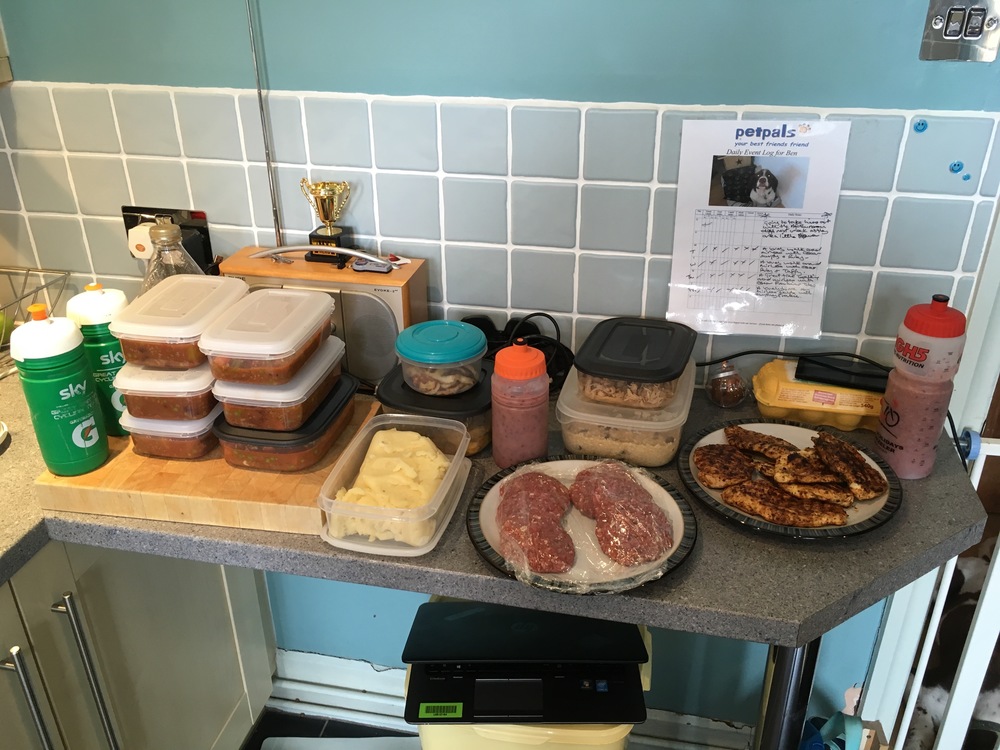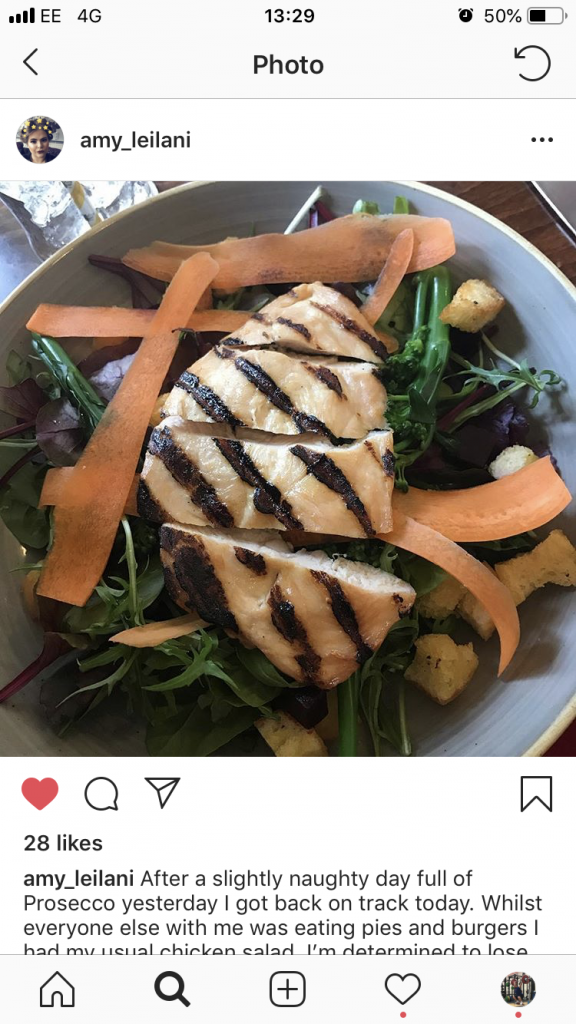Basic Food Prep Skills You Need to Cook from Scratch
If you’re a busy individual, you might find yourself reaching for processed meals several nights a week. The convenience of processed food can introduce an abundance of trans fats, added sugars, and sodium into your diet. Even processed food that claims to be healthy might have chemicals and additives that make you uneasy. Now, this isn’t to say that all processed food is bad. There are many processed foods, such as peanut butter and yogurt, that nutritionists approve of.

While you don’t have to completely cut out processed foods, there is value in learning how to cook food from scratch. Cooking from scratch allows you to have complete control over what you’re putting into your body. It can also be cheaper than buying processed foods and can taste better. And if you’re less worried about it being less convenient than processed foods, don’t be. When cooking from scratch, you can make bulk meals that you can then freeze and reheat at your convenience.
But if your current idea of cooking involves opening up the freezing and popping a frozen dinner into the microwave, you probably have no idea where to start with cooking from scratch. You’re going to have to develop some basic cooking skills. The good news is, you can learn most of these skills while also beginning to cook from scratch. Sure, some of your early meals might not be as tasty as you would like, but with enough practice, you’ll be throwing away your frozen meals and enjoying a good home-cooked meal.
How to use a knife
Basic knife skills are a must-have for anybody that is cooking from scratch. If you struggle to dice tomatoes or chop onions, your whole cooking process gets slowed down. Luckily, the more you use a knife, the better you’ll get!
Before you begin slicing veggies up, you’re going to want to get a good all-purpose chef’s knife that is sharp. If you find your knife is starting to get dull, sharpen it with kitchen steel. After you have a good knife, practice holding it. Keep one hand wrapped around the handle, with your index finger and thumb pinching the top part of the blade where it meets the handle. This gives you control over the blade. With your other hand, you’ll guide the food. Use your knuckles instead of your fingers to guide the food. This will help give you control over the ingredients without having to worry about accident slips of the blade.
Another essential tool in your kitchen arsenal should be the cleaver knife. The cleaver knife’s wide blade offers greater stability compared to other knives, making it safer to use when handled correctly, thereby minimizing the potential for accidents. Proper use of a cleaver can significantly reduce the risk of slips and injuries
You might already have some experience with slicing, dicing, and chopping. These are basic knife skills that most of us start practicing as children, but not everyone masters them. Slicing is easiest when you keep the tip of the knife on the cutting board and then move the blade up and down while using the knuckles of your other hand to guide the food. Be sure to keep your slices even! When dicing, allow your ingredient to sit flat on the board, and then create slices in both directions so you end up with mostly square pieces. And with chopping, quickly move the tip of your knife through your ingredients without worrying about equal-sized pieces.
Once you’ve practiced slicing, dicing, and chopping, move onto more advanced knife skills such as mincing and julienning. Before long, you’ll be using your knife skills to break down a whole chicken (click here to get detailed instructions on Foodal).
How to plan a meal
Knowing how to use a knife isn’t going to do you any good if you don’t know how to successfully plan a meal. When cooking from scratch, you need to know all the basic components of a meal to ensure that you’re eating a balanced diet. Fruits, veggies, grains, dairy, and protein are all foods you should be eating every day. The most successful meal planners prep their menu for the entire week and then buy only the ingredients that they’re going to use that week. This helps to keep your food fresh.
To start planning meals, get a cookbook or look online for recipe ideas, and find meals that you like. Figure out what ingredients you need for each meal and if any meals share common ingredients. Another positive of learning how to prep meals is that you’ll get good at reading recipes. Recipes help guide your cooking. You’ll need to know how many servings are in each recipe so that you’ll know how much food to purchase when you go grocery shopping.
When you first start meal prepping and cooking from scratch, you’ll want to experiment with different recipes to find recipes you enjoy making and eating. As you advance your cooking skills, you’ll figure out what your go-to recipes are and which recipes are best avoided.
How to season
When you’re cooking from scratch, you’re going to need to know how to season your food in more ways than just adding salt and pepper. Finding the right blend of seasonings can help bland food taste delicious by adding vibrant flavors to your food. If the idea of eating veggies every night disgusts you, you haven’t found the right seasoning yet! Hint – if you’re looking for ways to dress up your veggies, reach for lemon juice instead of butter.
Most recipes will call for specific blends of spices, but even with a recipe, sometimes knowing how to season can be challenging. While it’s okay to go bold with your flavors, you never want to skip tasting your food as you add spices. Where many people go wrong is adding all their spices at once and then forgetting to see if they achieved their desired flavor.
A good tip is to add half your spices at the beginning of cooking, and then keep adding more spices while you cook. Each time you add spice, remember to taste your cooking. You can always add more spices if it tastes too bland, but you can’t take spices away if you add too much.
Another great seasoning tip is grinding your own spices. Grinding your own spices ensures that your spices are fresh. Some people also prefer to use fresh herbs over dried herbs, because dried herbs generally take a while to release their flavors.
How to sear protein
Meat, poultry, and fish will be a staple in your diet unless you are a vegetarian. But if you want flavorful chops and steaks, you’re going to need to learn how to sear your protein. Searing is the process during which you caramelize the natural sugars within the protein to form a brown crust on the meat. If done correctly, this crust develops a rich and savory flavor which makes your proteins much tastier.

For most proteins, you’re going to use searing as the first step to cooking the protein before putting it into the oven. Only thin slices of meat or fish may cook through thoroughly during searing. To start searing, you’re going to need a stainless steel or cast-iron skillet that can withstand high temperatures. You’re going to want to take a thawed slice of protein, cut it the way you want it, pat it dry with paper towels to get rid of moisture, and season it. Then you’re going to put a teaspoon of canola, grapeseed, or light olive oil to your pan and preheat your pan at a medium-high temperature. You’ll know it is ready when the oil freely moves around the pan like water. Add the protein and let it sit undisturbed in the oil for several minutes. Do not peek under the protein because this can disrupt the crust from forming.
Once the protein has been in the pan for several minutes, give the pan a gentle shake. If the protein frees itself from the bottom of the pan, great! When you flip it over, you should see a nice, golden-brown crust. The protein has been seared and is now ready to go into the oven.
How to roast veggies
Roasted veggies paired with a protein make a great simple meal. If you’re not a fan of raw or steamed veggies, roasting your veggies will release new delicious flavors. Roasting caramelizes your veggies to make them crispy on the outside but soft and sweet on the inside.
Roasting veggies is easier than you might think. You’ll need to prep your veggies by cleaning them and cutting them into similar sized pieces. You then toss them in a bowl with about a teaspoon of olive oil to help ensure an even cook, spread them out on a baking pan, and stick them into the oven at about 425 degrees Fahrenheit. The time veggies need to cook will vary by type. Make sure to check your veggies halfway through their cooking time and toss time to ensure all sides of the vegetable are properly roasted.
Final Thoughts
Once you start practicing these basic food prep skills, you’ll be able to create basic meals from scratch! And the better you get with these skills, you’ll start being able to develop more advanced food prep skills so that you can experiment with more challenging recipes. So get rid of those frozen dinners, grab some chicken and veggies, and start cooking!
The https://www.hoylesfitness.com website is one of the best we
have found, and the Basic Food Prep Skills You Need to Cook from Scratch article is very well written and useful!
Thanks and kisses! 🙂
No problem Dianne!
Best food skill you teach us today. Thank you for sharing it.
Thanks Ema! Glad you enjoyed it!
Steve